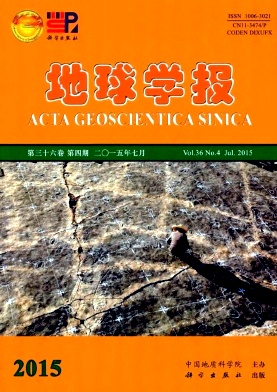WEN Wen, ZHANG Qi-yue, LIU Jun, HU Shi-xue, ZHOU Chang-yong, HUANG Jin-yuan, XIE Tao. New Progress in the Study of Marine Reptiles from the Luoping Biota of Middle Triassic Anisian Period[J]. Acta Geoscientica Sinica, 2015, (4): 385-393. doi: 10.3975/cagsb.2015.04.01
| Citation: |
WEN Wen, ZHANG Qi-yue, LIU Jun, HU Shi-xue, ZHOU Chang-yong, HUANG Jin-yuan, XIE Tao. New Progress in the Study of Marine Reptiles from the Luoping Biota of Middle Triassic Anisian Period[J]. Acta Geoscientica Sinica, 2015, (4): 385-393. doi: 10.3975/cagsb.2015.04.01
|
New Progress in the Study of Marine Reptiles from the Luoping Biota of Middle Triassic Anisian Period
-
Abstract
The Luoping Biota was discovered in 2007 by the Chengdu Center of China Geological Survey during 1:50000 regional mapping works at Dawazi Village, Luoxiong Town, 15 km southeast of Luoping City, Yunnan Province. The interval containing the Luoping biota is the middle to upper part of Member II of the Guanling Formation. The fossil assemblage of the Luoping biota is a mixture of marine animals, terrestrial plants and a few terrestrial animals. To date, more than ten fossil groups have been recovered, which include marine reptiles, fishes, arthropods, echinoderms, ammonites, bivalves, gastropods, lingulid brachiopods, foraminifers, and plants. The Luoping Biota is one of the most diverse Triassic marine fossil Lagerst?tten records in the world. The age of the Luoping biota is assigned to the Pelsonian Substage of the Middle Triassic Anisian Stage based on the index conodontNicoraella Kockeli. Well-preserved, diverse marine reptiles are one of the highlights of the Luoping biota, including ichthyosaurs, sauropterygians, protorosaurs and archosauromorphs. Mesozoic is remarkable for marine reptiles, whose swimming modes, however, remain a topic of much controversy because of the absence of their tracks. Hundreds of seabed tracks found in Luoping Biota, which were assigned toDikoposichnus luopingensis, provide new materials for the study of their locomotive mode. Besides, the macropredator Nothosaurus zhangireported from Luoping Biota also supports the existence of the makers ofDikoposichnus luopingensis. The skull ofNothosaurus zhangi is the largest sauropterygian ever reported in Triassic. The occurrence of a different assemblage of marine reptiles as top predators in the food web indicates a well developed marine ecosystem, showing full rebuilding of the marine ecosystem after the mass extinction that happened about 250 million years ago.
-

-
-
Access History







 DownLoad:
DownLoad: